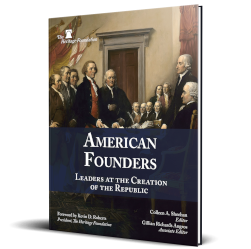The upcoming White House summit between President Donald Trump and South Korea’s recently inaugurated President Lee Jae Myung can further cement one of America’s most critical alliances by elevating the trade and investment regime between the two countries, particularly in the context of increasing defense and industrial cooperation.
President Trump and President Lee will hold their first meeting on August 25 in Washington.REF While the two presidents could agree or disagree on a host of tactical issues when they meet at the White House, the focus of the Trump–Lee summit, beyond cultivating a personal connection and mutual trust, should be to establish a refined strategic direction and to outline benchmarks for the relationship.
More Focused Engagement
After President Lee won South Korea’s snap presidential election on June 3, the Trump Administration underscored the importance of the U.S. alliance with South Korea through the statement by Secretary of State Marco Rubio:
We congratulate President Lee Jae-myung on his election as the next president of the Republic of Korea (ROK). The United States and the Republic of Korea share an ironclad commitment to the Alliance grounded in our Mutual Defense Treaty, shared values, and deep economic ties. We are also modernizing the Alliance to meet the demands of today’s strategic environment and address new economic challenges.REF
Despite ups and downs, U.S.–South Korean relations have been on a positive and upward trajectory. The time-tested alliance has also proven that it is principally capable of transcending political and ideological orientations—conservative or liberal—of past South Korean governments.
However, the two long-standing allies should undertake more pragmatic and focused engagements, particularly to adapt to the new geo-economic environments and to sharpen the strategic utility of the vital alliance. The August 25 White House summit should be an occasion to point to such a path.
America’s Mega-Capable Business Partner from Chips to Ships
The United States and South Korea have already operationalized a framework for fruitful cooperation. It is no exaggeration to say that the ROK is one of the best examples of an ally putting its security and economic partnerships with the United States into real, practical, concrete action. Time and time again, South Korea has proven to be a reliable and capable U.S. ally.
South Korea is one of the most highly competitive economies in the world and has notably transformed itself from a security consumer to America’s capable and reliable security partner that can play a pivotal role in a broader context beyond the U.S.–South Korea security theater. This unique alliance has been buttressed by a track record of working closely together across the Pacific and beyond while overcoming challenges and adapting to ever-changing geopolitical, economic, and security environments.REF
It is thus in the clear interest of both Washington and Seoul to bolster the pivotal partnership in more pragmatic ways, particularly through greater strategic clarity and cooperative commercial initiatives that will enhance the resilience and practicality of the alliance.
Recommendations for Washington and Seoul
In his November 7, 2017, speech to South Korea’s National Assembly, then–President Donald Trump unambiguously noted that “this alliance between our nations was forged in the crucible of war and strengthened by the trials of history.” He further underscored his belief “that the Republic of Korea, which has become a tremendously successful nation, will be a faithful ally of the United States very long into the future.”REF In order to further amplify the U.S.–Korea alliance, Washington should:
Welcome and Incentivize Seoul’s Proactive Approach. Washington should welcome and further incentivize Seoul’s ongoing proactive operational approach of adopting a mindset of joint investors and co-developers for its economic engagements with the United States, not just the conventional exporter–importer trading relationship. South Korea has a number of key assets and technological capabilities that the United States needs at this critical juncture of ensuring America’s reindustrialization. That unique setting can and will provide constructive and practical incentives to make reciprocity better and more strategically applicable to the ever-evolving and multifunctional U.S.–South Korea alliance.
Pursuing a bilateral strategic defense industry development and production ecosystem can and will strengthen the economic security partnership between the two partners as consistently pointed out by The Heritage Foundation.REF South Korea has a unique practical dividend from its mutual defense treaty with the United States that was signed in 1953. Thanks to that critical treaty, which has been the backbone of the alliance, South Korea has been able to build a highly capable military and multiple industrial sectors.
Embrace Allied and Defense Production with Seoul. By taking more practical advantage of allied defense production with South Korea in critical partnership areas, such as artillery munitions and, particularly, shipbuilding—for which South Korea has a massive capacity in terms of production and technological advancement—the U.S. would benefit greatly. The United States would reach maintenance and production targets faster and more efficiently while leveraging the interplay between economic security and national security, especially in a broader cooperative frame of strategic burden sharing and alliance modernization to reflect new geoeconomic and security environments.
Indeed, as highlighted recently in the U.S. Naval Institute’s USNI News, “the South Korean–owned Hanwha Philly Shipyard adjacent to the old Philadelphia Navy…is an example of the foreign investment into U.S. shipbuilding [that] the Trump administration has endorsed as part of an overall White House push to expand American manufacturing.”REF Visiting the Philly Shipyard with Office of Management and Budget Director Russ Vought, whose task encompasses the Trump Administration’s shipbuilding effort,REF Secretary of the Navy John Phelan notably underscored on July 30:
Commercial shipbuilding supports military shipbuilding…. You need to have good commercial shipbuilding to have good military shipbuilding. This is not about [foreign] outsourcing and all that. It’s about creating the industrial base and really doing it with urgency. I think what’s great…is the entire administration is coordinated.REF
Avoid Regulatory Barriers. From another standpoint of the “joint investors and co-developers” approach, Washington and Seoul should develop a forward-looking bilateral strategic energy-development cooperation to ensure that no regulatory barriers impede a durable energy partnership. This will be especially important for the deployment of commercial nuclear energy, wherein the United States should work very closely with South Korea, given the latter’s track record of exporting affordable commercial nuclear power plants. This partnership should also include collaboration on advanced nuclear reactors and used-fuel-management technologies.
Focus on Results-Oriented Development Assistance. Now is the time to devise a practical partnership to promote results-oriented joint development assistance. As a former recipient of U.S. assistance, South Korea, now one of the richest countries in the world, provides a unique perspective and credibility to the donor community it has now joined. A strategic development-assistance partnership between South Korea and the United States has considerable potential to promote best practices and strengthen the efficiency of development assistance.
Particularly in the realm of infrastructure development where large-scale, high-quality investment plays a pivotal role, enhancing U.S.–South Korea cooperation in infrastructure finance offers a unique opportunity to maximize the impact of targeted investments in nations seeking greater economic resilience and freedom. South Korea’s relevant agencies, such as the Korea Overseas Infrastructure and Urban Development Corporation, would be uniquely capable partners to the U.S. in jointly financing and developing large-scale infrastructure projects in collaboration with the U.S. International Development Finance Corporation.
Sharpening and Amplifying the Alliance
South Korea has proven to be a reliable and strong American ally in advancing freedom, opportunity, and prosperity in eastern Asia and around the globe. However, much more can be accomplished, and the United States and South Korea have much to offer to each other.
This year marks the 75th anniversary of the outbreak of the Korean War. Since then, South Korea has consistently proven to be a reliable and steadfast partner in dealing with many tests confronting the two longtime allies. Throughout the many trying and challenging times over the past decades, South Korea has demonstrated its willingness, resilience, and capacity to work with the U.S. toward shared goals.
Secretary of State Rubio highlighted on August 13 that “the United States is proud to stand with the ROK, which has flourished as a resilient democracy and valued economic partner.”REF Further noting that “as indispensable Allies, we will continue working together to expand prosperity and confront the most pressing global security challenges,” Secretary Rubio underscored that “we look forward to collaborating with President Lee Jae Myung and his administration to advance the ironclad U.S.–ROK Alliance.”REF
Indeed, despite much noise and many distractions, South Korea and the United States have been able to conserve and progress a critical alliance—an economically and strategically indispensable partnership—perhaps far more resiliently than skeptics may argue. A strong and vibrant U.S.–South Korea economic alliance is vital for not only America’s economic security, but also for its broader national interests. The United States is the largest destination for South Korea’s foreign direct investment,REF and South Korea has pledged to invest $350 billion in the U.S. under the new trade deal of July 31.REF
At their meeting on August 25, President Trump and President Lee should seize the unique opportunity to expand this crucial and long-cherished partnership.
Derrick Morgan is Executive Vice President of The Heritage Foundation. Anthony B. Kim is the Jay Kingham Research Fellow in International Economic Affairs, Editor of the Index of Economic Freedom, and Manager of Global Engagement in the Margaret Thatcher Center for Freedom at The Heritage Foundation.




